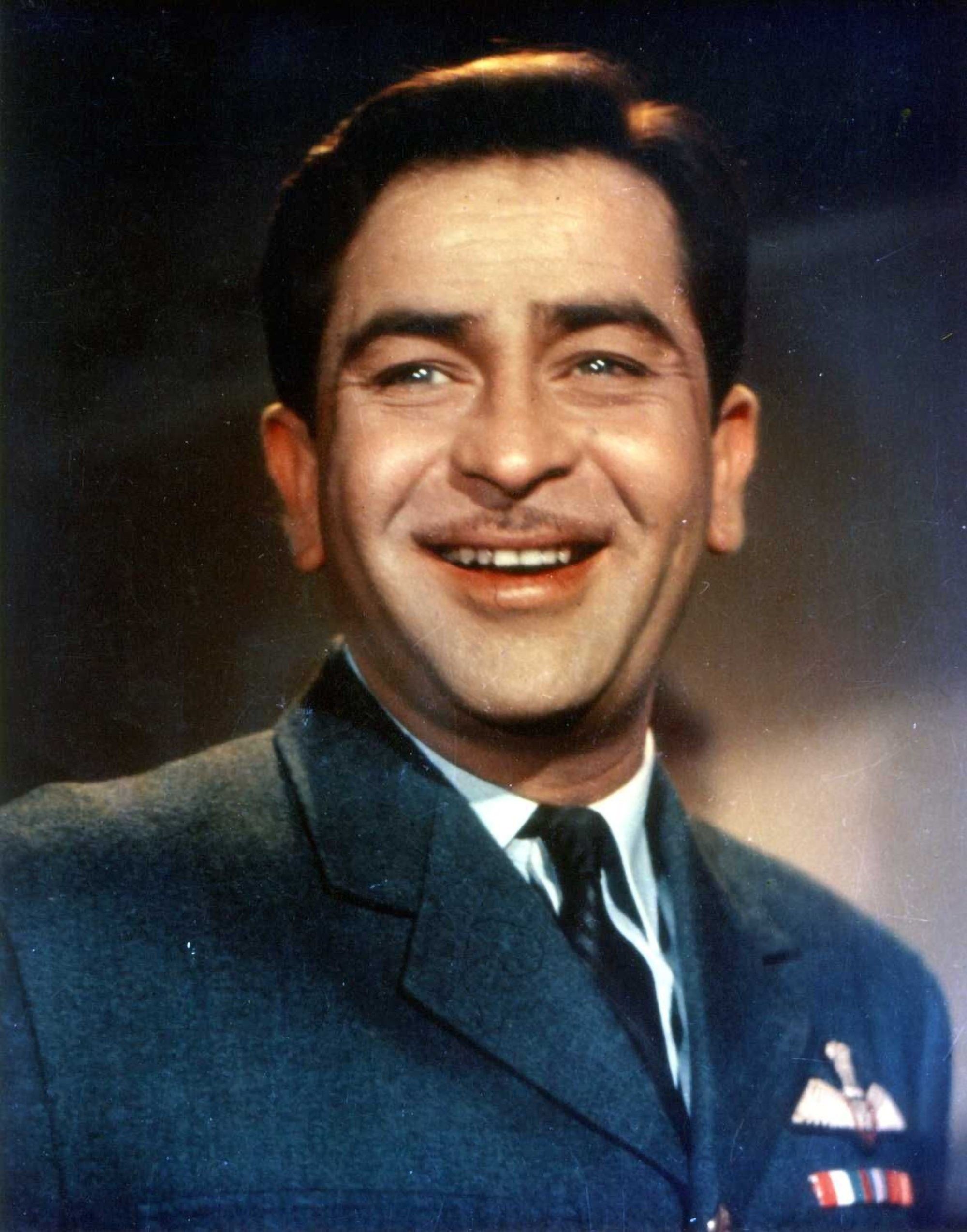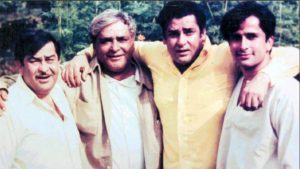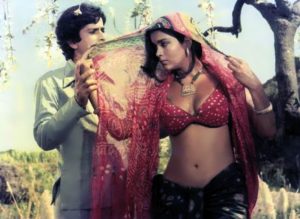- Sunday, November 24, 2024

By: ASJAD NAZIR
ANNIVERSARY SPECIAL TO CELEBRATE THE EXTRAORDINARY LIFE AND CAREER OF MEGA STAR RAJ KAPOOR
THIS week marks the death anniversary of legendary Bollywood superstar Raj Kapoor.
Affectionately known as the great showman, the iconic actor and filmmaker passed away on June 2, 1988, aged 63, and will rightly be remembered around the world. To mark the occasion, Eastern Eye went through his extraordinary life, career and body of work to present an all you need to know A to Z about the marvellous mega movie master.
A is for Andaz: Record-breaking love triangle Andaz (1949) would turn newcomers Raj Kapoor, Dilip Kumar and Nargis into superstars. The blockbuster success would become the highest grossing film in Bollywood history and would kick-start a life-changing year for the actor.
B is for Barsaat: At 24, Raj Kapoor would become the youngest actor-director in Bollywood history with Aag (1948), and then a year later delivered huge hit Barsaat (1949). The game-changing movie would be such a success that it gave the ambitious young star enough money to buy land to build his legendary RK Studios (see R). The path-breaking film would be the first to introduce close embraces and inspire others in the conservative country to be a little more daring.
C is for Charlie Chaplin: The little tramp persona that would appear in many of his films was heavily inspired by roles portrayed by Charlie Chaplin during the silent era. He would later meet his idol and said it was one of the biggest highs of his life.
D is for Director: Although he made a name for himself as a frontline A-list movie star, Raj Kapoor is also regarded as one of the greatest filmmakers in Bollywood history. He produced and directed alltime classic films in five different decades, starting with Aag (1948) and ending with his final fully completed blockbuster Ram Teri Ganga Maili (1985).
E is for Everything: Having grown up on studio sets, the multi-talented legend was good at pretty much everything associated with filmmaking, including acting, directing, producing, editing and writing. He was also an accomplished musician and would contribute valuable ideas for hit songs in his movies. Being the youngest star anywhere in the world to set up his own studio lot, he was also a great businessman.

F is for Family: Raj Kapoor is the most successful star of Bollywood’s most famous film dynasty, which was started by his actor father Prithviraj Kapoor. Other huge stars from the famous Kapoor family include his brothers Shammi and Shashi, son Rishi Kapoor, and his grandchildren Ranbir and Kareena. The most famous film dynasty anywhere in the world has been going strong for over 90 years.
G is for Global: Raj Kapoor films would help Bollywood go global in the 1950s, with record-breaking release Awaara (1951) making the greatest impact. The film would smash open new territories for Hindi cinema in a big way, including Russia, Middle East, Africa, China and East Europe. In terms of tickets sold, it remains one of the most successful anywhere in the world. It would be nominated for a grand prize at Cannes Film Festival.
H is for Honours: The multi-talented star won numerous accolades throughout his illustrious career, including Indian cinema’s highest prize the Dada Saheb Phalke Award and various international honours. Significant honours included winning a National Award for Best Film for Shree 420 (1955) and Jis Desh Mein Ganga Behti Hai (1960). He would win Filmfare Awards for best actor, director and film multiple times. The Filmfare Lifetime Achievement award is named after him.
I is for Inspiration: The scene where Rishi Kapoor meets Dimple Kapadia in Raj Kapoor’s blockbuster Bobby, was inspired by his own first meeting with Nargis (see N). He was heavily inspired by Charlie Chaplin (C). Many of his own movies served as inspiration for movies that followed, including Raju Ban Gaya Gentleman (1992) being an adaptation of his classic Shree 420 (1955). His own acting style was incorporated by later stars, including his son Rishi Kapoor. His friendship with filmmaker Hrishikesh Mukherjee would inspire the movie Anand (1971).
J is for Jagte Raho: His film Jagte Raho (1956) would win the Crystal Globe Grand Prix at the Karlovy Vary International Film Festival in Czechoslovakia in 1957. It was one of many early features to get acclaim at international festivals.
K is for Kal Aaj Aur Kal: Raj Kapoor launched his eldest son Randhir Kapoor as an actor and director with family drama Kal Aaj Aur Kal (1971), which featured three generations of the family, including him, his son and father Prithviraj Kapoor. He would launch his second eldest son Rishi Kapoor as leading man two years later with blockbuster hit Bobby (1973).
L is for Legacy: The incredible legacy of Raj Kapoor includes an amazing body of all-time classic films, timeless songs, strong female characters (see Q) and breaking ground in Bollywood with taboo topics. It is his lineage that has carried on the Kapoor dynasty through his children and grandchildren. He also launched new stars in front of the camera and behind the scenes, including music directors, lyricists, writers, singers and technicians.
M is for Mukesh: A singer that will forever be associated with Raj Kapoor is Mukesh. That combination of his singing and Raj Kapoor performing the musical numbers on-screen resulted in many magical moments across different decades. Some of these musical numbers included Awaara Hoon (Awaara), Mera Joota Hai Japani (Shree 420), Dost Dost Na Raha (Sangam) and Jane Kahan Gaye Wo Din (Mera Naam Joker).
N is for Nargis: Raj Kapoor and Nargis formed arguably the greatest on-screen Bollywood couple of all time. What added to their sizzling chemistry was a very famous real-life relationship. Their all-time classics include Andaz (1949), Barsaat (1949), Shree 420 (1955) and Chori Chori (1956).
O is Opus: The actor rounded off his career as a leading man with his biggest budget film Mera Naam Joker (1970). Although the magnum opus almost bankrupted him, it would become a cult classic and be regarded as one of the all-time great movies of Raj Kapoor.
P is for Peshawar: Raj Kapoor was born in Peshawar, in present-day Pakistan in 1924 and was the eldest of six siblings. His father Prithviraj Kapoor moved to Mumbai in 1928 with a loan he got and made his acting debut the same year, which kickstarted a family dynasty still going strong today. Interestingly, his biggest rival during the golden age of Bollywood, Dilip Kumar, was also born in Peshawar, in 1922.

Q is for Queens: The actor starred opposite the biggest leading ladies throughout his career, but more impressively led the way in delivering powerful female characters in his films. Some of the most memorable female protagonists appeared in his home productions, including Awaara (1951), Shree 420 (1955), Sangam (1964), Bobby (1973), Prem Rog (1982) and the path-breaking Satyam Shivam Sundaram (1978).
R is for RK Films: Raj Kapoor founded his film banner RK Films with Aag (1948) and then later after the blockbuster success of Barsaat (1949), he built his own studio, despite still only being in his twenties and an in-demand movie star. He would goon to mastermind some of the greatest films in Indian cinema history, which broke ground, tackled taboo subjects, launched new talent and entertained billions across different generations. Sadly, his children were not able to carry on the film banner successfully after he passed away.
S is for Stamp: A postage stamp featuring the legendary actor was released by India Post on December 14, 2001, to honour him. A brass statue of him was later unveiled on Walk Of The Stars in Bandra, Mumbai. In 2014, Google commemorated his 90th birth anniversary.
T is for Tunes: Hit songs played a huge part in all of Raj Kapoor’s movies and that was largely thanks to the great ear for music he had. His finest collaborations were with music duos Shankar-Jaikishan and Laxmikant-Pyarelal, respectively. He had also given a platform to legendary lyricists like Hasrat Jaipuri and Shailendra. Songs from his films are still loved many decades later. He also helped turn singers like Lata Mangesghkar and Mukesh into big stars.
U is for UK: The Bollywood icon maintained a close connection to the UK and was a frequent visitor. His last official movie as an actor was a cameo in British TV movie Kim (1984).
V is for Videos: The popularity of timeless songs, scenes, films and moments is such that videos featuring Raj Kapoor have been viewed billions of times on video sharing sites like YouTube.
W is for Wife: Raj Kapoor had an arranged marriage to Krishna Malhotra in 1946, before finding fame, and they remained married until his death in 1988.
X is for X-Rated: Whether it was the close embraces in Barsaat (1949), the barely there sari in Satyam Shivam Sundaram (1978) or the wet see-through sari in Ram Teri Ganga Maili (1985), Raj Kapoor pushed the boundaries of censor laws his entire career to the limit.
Y is for Youngster: Raj Kapoor made his film debut as a 10-year-old child star in Inquilab (1935). Although he would do more films as a child star, the youngster did other jobs on set from sweeping up to operating the clapperboard so he could learn about filmmaking. By the time he made his debut at 23 as a leading man opposite a teenage Madhubala in Neel Kamal (1947), he had a lifetime of knowledge and used that to become a legend.
Z is for Zeba Bakhtiar: The Pakistani actress made her Bollywood debut in Henna (1991), which was a cross-border romance Raj Kapoor had commenced working on but was not able to make as he passed away during the planning stages. It would be the last successful film of his banner and was India’s submission for the Academy Award for Best Foreign Language Film. It was the last creative moment of a wonderful career.
Nushrratt Bharuccha on Chhorii, pressure of comparison with Lapachhapi, upcoming…
Abhimanyu Dassani on Meenakshi Sundareshwar, how his mom Bhagyashree reacted…
It’s a wrap for Prabhas, Kriti Sanon and Saif Ali…